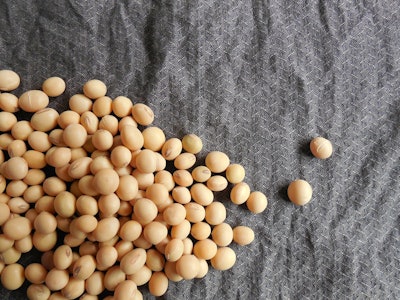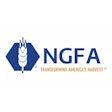
File Photo
Change is around us everywhere and this is certainly true for you in the feed and grain business. One of the changes that many are currently dealing with is handling both specialty and commodity products — and since the feed and grain industry has traditionally been one of commodity products, you are facing some important challenges. However, with challenges also come opportunities. In this article we outline some of the changes that are happening related to specialty products; some results of recent research at Purdue University; and we provide a few suggestions for changes you might implement in your business.
The introduction of the specialty products noted above are sometimes driven by technological change, where through genetic advancement, products with unique and highly demanded characteristics (e.g., high oleic soybeans) are appearing. In other cases specific consumer demands are the driving force (e.g., non-GMO products). There is an additional quality associated with the product because of the unique characteristics of that product and that additional quality will only be maintained if the identity of the product is preserved throughout the value chain. This is where the opportunity and the challenge arise for you in the feed and grain business.
As a manager in the feed and grain business, you must now handle both commodity products and specialty products. The feed and grain system was developed to handle large volumes of commodity product. Thus, most of your physical systems are set up to be efficient when handling large volumes of a small number of products. Sure, you have always switched from one grade of corn to another, but you didn’t need a complete cleanout as small amounts of product intermingling were tolerated as long as you met the grade specifications. The need for identity preservation (IP) in order to maintain the additional value of specialty products is now a reality and comes with financial benefits if you can manage the demands put on your system.
Defining identity preservation (IP)
The terms “hard” IP and “soft” IP can be helpful in understanding this issue. “Hard” IP refers to those situations when no comingling of the specialty product with commodity product can be tolerated. With “soft” IP some degree of comingling of specialty product with commodity product will not significantly detract from the value of the specialty product and is acceptable.
The relevant questions for you as a manager are: What is the additional cost to maintain the identity of the specialty products you are handling? How much additional revenue or premium will you receive from handling specialty grains? The additional costs depend on a number of factors including: the specific quality attribute that needs to be preserved, the loss of value that could occur from comingling with commodity crops, and the volume of product you are handling. Of course the premiums received must cover your additional costs for you as well as the other players in the value chain. We hope that with a better understanding of what additional costs the other players in the value chain face you will be better able to strategically position your business in this changing marketplace.
Additional costs of IP along the value chain
Research at Purdue University, as part of the master’s degree thesis of Haley Henley (nee Wendler) in 2013, sheds insight on the additional costs of identity preservation along the value chain. The objective of that research was to delineate and quantify different kinds of IP costs across the value chain. Although the example in that research was soybeans, the results are applicable for any grain or feed product requiring identity preservation. The research involved: (1) industry interviews to identify the types and nature of IP costs along the value chain; (2) development of spreadsheet models, reflecting the range of different IP costs, enabling the presentation of partial budgets; (3) validation of the spreadsheet models and (4) analysis of the results to identify implications for the industry.
A goal for the research was to determine from the decision makers at the grower, grain originator and processor/refiner levels, the additional activities that were required for hard IP and soft IP. During in-person interviews the researchers had respondents fully describe the nature of the additional activities and increased costs required for IP. The information from the interviews was analyzed and used as input to develop spreadsheet models to calculate the additional costs of IP for the producer, originator and processor/refiner stage of the value chain. Regular input from Purdue Agricultural Economics and Agricultural Engineering faculty as well as industry representatives provided validation of the spreadsheet models. A base case for each of the hard IP and soft IP cases was defined and the costs calculated. Various scenarios were then developed and associated costs calculated to illustrate the effect of changing conditions.
Table 1 shows the additional cost, per bushel of specialty grain, for growers, originators and processors.
Costs faced by growers
For products where hard IP is required, growers face costs ranging from $.2756 to $1.8761 per bushel of specialty grain. It is interesting to note that for our base case scenario the cost per bushel of specialty grain is $1.0337. This base case assumed: 500 acres of specialty soybeans, 3 acres of border strips, 5% yield drag on a 55-bushel/acre yield, $14.00/bushel for selling price for soybeans, $16.00/bushel selling price for specialty soybeans, a difference of $23/bag of specialty seed, a difference of $30/acre for herbicide application, 21 additional hours for cleaning equipment, 13 additional hours of record keeping and auditing, labor costs at $15, $30 and $100/hour, additional delivery of 40 miles, and shrinkage of 1.15%. Yield drag (the reduction in yield for the specialty grain compared to commodity grain) is the variable that has the greatest impact on the cost of IP for the grower. For example, when yield drag is increased to 10% the cost of IP is at the high end of the spectrum at $1.8761.
Growers face significantly lower costs of IP when soft IP is all that is required. In this case the cost growers face ranges from $0.1798 to $0.9291/bushel of specialty grain. For our base case scenario the cost per bushel of specialty grain is $0.1798/bushel of specialty grain. For soft IP the differences from the above base case are: no border strips, $14.50/bushel selling price for specialty soybeans, a difference of $3/bag of specialty seed, six additional hours for cleaning equipment, five additional hours of record keeping and auditing. Once again, yield drag was the most important factor impacting the cost of IP for the grower. When yield drag increased to 5% the cost if IP is at the high end of the spectrum at $0.9291.
Costs faced by originators and processors/refiners
In cases where strict separation requirements are in place, thus requiring hard IP, originators faced IP costs ranging from $0.0367 to $0.2591/bushel of specialty grain. For the base case scenario the hard IP cost was $0.1798. The base case scenario assumed: 64 labor hours to clean the facility before and after handling specialty grain, five labor hours for additional testing, 34 labor hours for cleaning trucks, three labor hours for additional record keeping with labor costs at $15, $30 and $100/hour, no additional delivery distance, and testing machines costing $30,000 with a three-year lifetime. Increasing the delivery distance had the most significant impact on IP costs. With a 60-mile increase in delivery distance the IP costs are $0.2051.
As expected, when the IP requirements are relaxed, as is the case for soft IP, the originator’s IP costs are significantly lower ranging from $0.0163 to $0.2346. For soft IP the base case differs from the hard IP case in the following way: 20 labor hours to clean facility before and after, five labor hours for additional texting, 15 labor hours for cleaning trucks and three labor hours for additional record keeping. For the base case scenario the soft IP cost was $0.0196. Once again, increases in delivery miles had the most significant impact on IP costs.
As noted above, soybeans were the example for the research reported here — thus the processor/refiner was assumed to be processing soybeans for oil and meal. The processor faces IP costs ranging from $0.0657 to $0.2241 for hard IP and $0.0593 to $0.2106 for soft IP. Crush margin, along with the hours it takes to perform a shutdown were found to be the factor that had the greatest impact on IP costs for the processor.
Recommendations for management decisions
The introduction of specialty feed and grain products represent both a challenge and an opportunity for you and the decision makers that you trade with along the value chain. The premiums offered for specialty grains must be large enough to cover the costs of IP, whether it be hard IP or soft IP. As reported here, IP costs are highly variable and thus will be different for every business. For originators the most significant variable was extra delivery distance to transport the specialty grain to the buyer. When delivery distance is too large, it will no longer be profitable to handle specialty grains. The rate at which your facility can receive trucks can also affect IP costs, but not to the same extent as delivery distance. Since the cost of a testing machine is amortized over three years, increases in machine costs have little effect on per bushel IP costs. Thus, as a manager in the feed and grain business you will want to manage the logistics associated with delivery of the specialty grain, working to minimize the distance that you need to deliver the specialty grain.
The factors faced by your grower customers will influence whether they decide to grow specialty grains and thus whether you have the opportunity to handle those specialty grains. As noted above, yield drag is the most important factor affecting the IP costs your growers face. Thus, you can expect that growers are much more likely to adopt specialty products with minimal yield drag.
For all players along the value chain, it is also important to note that those who become established in handling specialty grains will adapt their production and business practices to achieve greater efficiency when handling specialty products. Having a grain storage system with sufficient small size bins so that specialty grain can be stored separately without having excessive volumes of wasted storage space is one of those best practices. In addition, working logistics so specialty grains are handled at one time, thus minimizing the time for cleaning is another best practice that will reduce IP costs.
Related to this is the effective use of labor. For example, planning for hired labor, at a rate of $15/hour, is used to vacuum out equipment — keeps the cost of IP down compared to having higher cost labor doing the vacuuming.
The decision to handle specialty grains will be different for every manager. If after evaluating all conditions, you identify profit potential, then you have an opportunity for additional profit. As you are quite aware in our changing world, conditions are constantly changing; regular re-evaluation of your costs and benefits will be critical for long-term success.
Growing opportunity
Specialty grains — and the need to keep them “special” have been increasing in volume and potential economic return. As agricultural economists, we would argue this is a reflection of the concepts we teach in our classes — that the market through supply and demand will meet the needs of both producers and consumers. As has been outlined above, the key to profit opportunity in this expanded market comes from managing the details, analyzing the market prices offered and the costs associated with meeting the demands of IP. We hope this column provides you with some useful data and thought-provoking concepts you can utilize in your business.

















